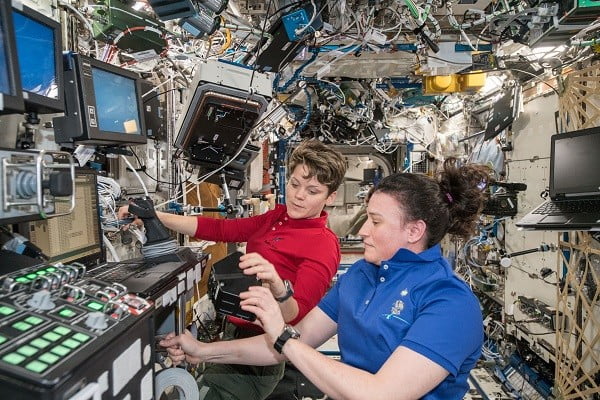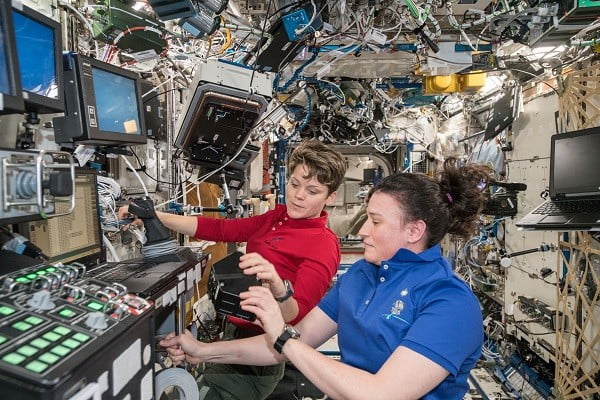One of the primary functions of the International Space Station (ISS) is to provide a venue for scientific research into a whole host of topics that benefit from investigation in a microgravity environment. To ring in the new year, NASA has released a round-up of some of the biggest scientific discoveries made on the ISS in 2021.
Much of the research done on the ISS is about health issues that affect both astronauts and those on the ground. Some of the experiments done in human health included investigating bone loss, which is a problem for astronauts who stay in space long-term and lack the effects of gravity on their weight-bearing bones. Bone loss is also a problem for those on Earth with various medical conditions, especially older adults. A study using data from the ISS was able to predict bone loss based on biomarkers and exercise history, which can help in the identification of astronauts at particular risk for bone loss. In the long term, it could help create better exercise regimens for astronauts as well.

Another health study from the Russian Space Agency Roscosmos looked into cardiovascular health, in particular how the structure of veins in the legs changes in microgravity. It found that being part of two separate space missions did not worsen this issue if there was sufficient time between the two and if they had good muscular health, meaning astronauts can protect themselves from cardiovascular issues in space by performing physical exercise.
A further investigation into stem cells looked at how microgravity affects cardiovascular stem cells and found that being in microgravity returned the cells to an earlier developmental state, potentially improving the cells’ ability to regenerate and survive. If researchers can find out how to trigger this effect on Earth, it could be invaluable for treating a wide range of conditions and replacing damaged cells or tissues.
Other work done on the space station was looking into ways to help astronauts survive on long-term space missions, such as future missions to Mars. One big problem in such missions is astronauts and electronics being outside the magnetosphere of Earth and hence being exposed to ionizing radiation. This radiation is dangerous to health and interferes with electronics as well. An experiment from the Japanese space agency JAXA looked into materials for radiation shielding and found that adding a mineral called colemanite to a polymer helped reduce the polymer’s absorption of radiation. This could help build better radiation shielding for use both in space and in harsh environments on Earth.
For even more examples of the scientific work done on the ISS this year, head to NASA’s website.
